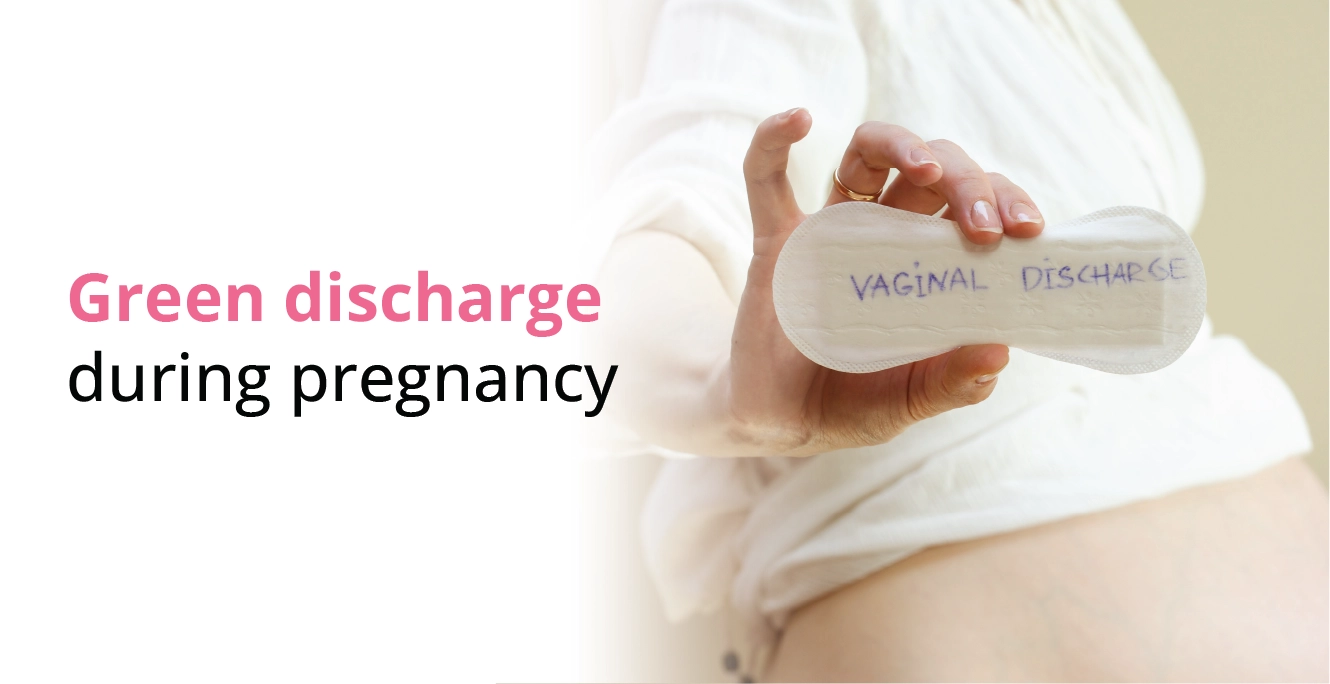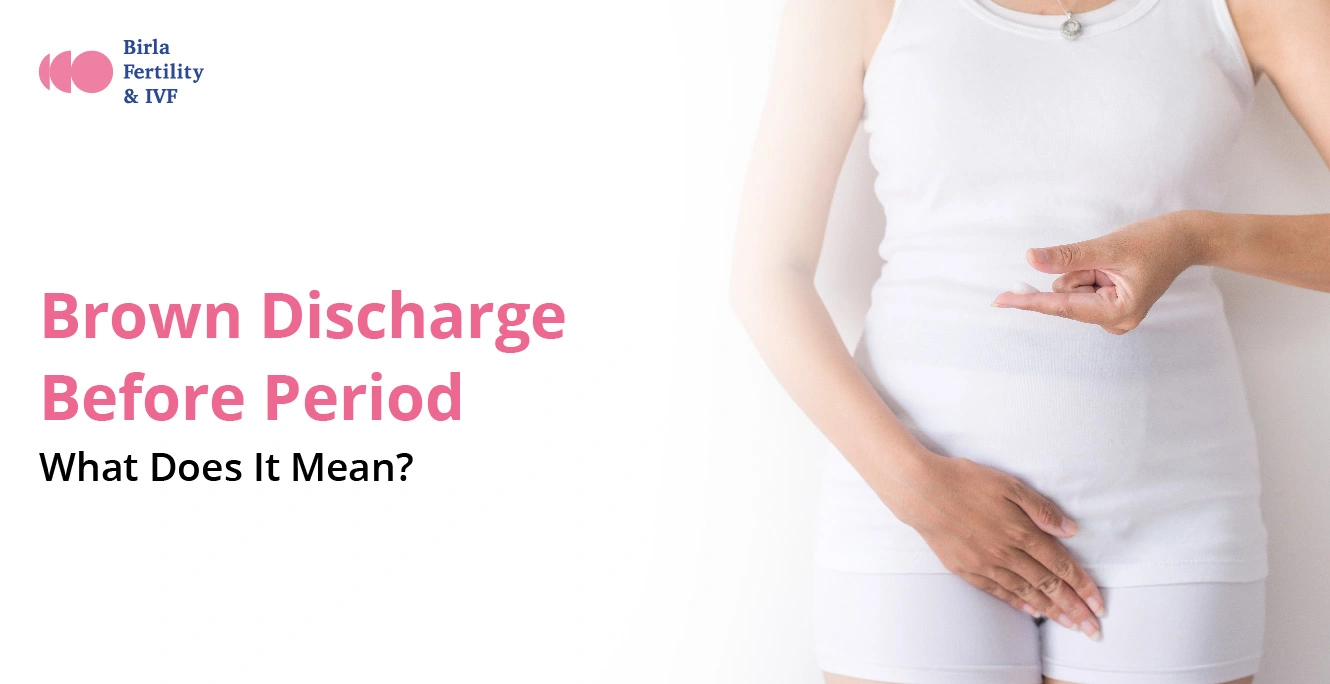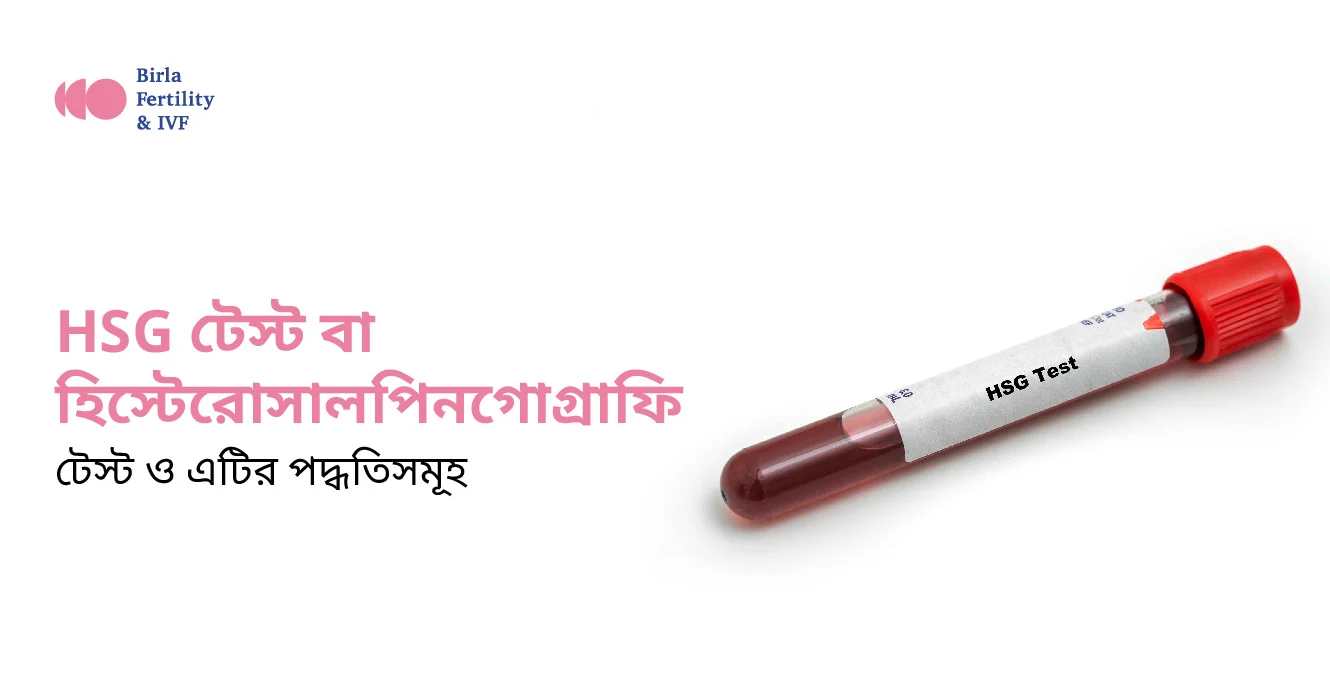
Green discharge During Pregnancy: Causes, Symptoms & Prevention

Table of Contents
- Quick Highlights
- What Is Green Discharge During Pregnancy?
- Causes, Symptoms and Treatment of Green Discharge During Pregnancy
- How to Prevent Green Discharge During Pregnancy?
- Is Green Discharge During Pregnancy Normal?
- Can Green Discharge Lead to Miscarriage?
- When to Consult a Doctor
- How to Treat Green Discharge During Pregnancy
- Green Discharge During Pregnancy: Third Trimester Concerns
- Wrapping it Up!
- Word From an Expert
Quick Highlights
- Vaginal discharge is normal during pregnancy but green or light green discharge should not be overlooked as it can be a sign of infections or imbalances.
- Green discharge is often not considered a normal condition and may be a sign of complications of pregnancy such as pre-term labour or a miscarriage.
- Some causes may include bacterial vaginosis, trichomoniasis or yeast infections that must be treated without delay.
- It can be prevented by following good hygiene practices, wearing comfortable clothing and regular monitoring during pregnancy.
- Consult a doctor promptly if the discharge is accompanied by odour, itching, pain, or fever.
- Treatment of green discharge depends on the underlying cause and may involve antibiotics, antifungal medications, or other therapies.
- Timely intervention ensures a healthier pregnancy journey for you and your baby.
The journey to parenthood is a beautiful dream come true, and ensuring its safety and well-being is the greatest priority.Pregnancy is one of the most significant phases filled with emotional and physical changes in a woman’s life and many of the changes that happen during pregnancy can cause questions and concerns. One of them is a greenish vaginal discharge in pregnant women. Although it may be disturbing, knowing the causes, indications, and treatments will help alleviate stress and guide you to the right action. This blog gives detailed insight into the issue of green discharge during pregnancy addressing common queries and giving tips. Let’s begin!
What Is Green Discharge During Pregnancy?
- Green discharge refers to vaginal discharge that is greenish and may vary in consistency.
- An unpleasant odour, irritation or other symptoms can sometimes accompany it.
- While discharge is normal during pregnancy due to hormonal changes, green discharge usually indicates an infection or other underlying condition that requires attention.
- Therefore, the person should consult a doctor to avoid any complications.
Causes, Symptoms and Treatment of Green Discharge During Pregnancy
There can be many reasons for greenish discharge such as infections and diseases. Here are some of the possible causes with their symptoms and treatments available.
| Causes | What Happens? | What Are the Signs? | How can it be Treated? |
| Bacterial Vaginosis (BV) | An imbalance of vaginal bacteria. | Greenish or grey discharge, a fishy odour, vaginal itching, or burning. | Antibiotics are prescribed by a healthcare provider. Probiotics may also help restore bacterial balance. |
| Sexually Transmitted Infections (STIs) | Transmission through sexual contact. Examples: Trichomoniasis, gonorrhoea and chlamydia. | Green or yellow discharge, painful urination, itching or pelvic discomfort. | Specific antibiotics depending on the infection. Early diagnosis is crucial to avoid complications during pregnancy. |
| Yeast Infections | Overgrowth of yeast due to hormonal changes or antibiotic use. | Thick, greenish or white discharge, itching, and redness. | Antifungal medications (topical creams or oral medications, as advised by a doctor). |
| Cervical Infections | Infections such as cervicitis or pelvic inflammatory disease (PID). | Green or yellow discharge, pain during intercourse, or spotting. | Antibiotics and regular follow-ups to ensure the infection clears. |
| Amniotic Fluid Leakage | Premature rupture of membranes. | Watery or greenish discharge with a possible sweet smell. | Immediate medical attention to prevent complications like infection or preterm labour. |
| Foreign Objects | Forgotten tampons, contraceptive devices, or other objects. | Green discharge, foul smell and irritation. | Removal of the object and treatment for any resulting infection is required. Consult your doctor. |
How to Prevent Green Discharge During Pregnancy?
Preventing green discharge often involves maintaining good vaginal hygiene and addressing risk factors. Here are some do’s and don’ts that can be looked at to avoid green discharge.
Do’s:
- Practice safe sex by using protection and ensuring your partner is tested for STIs.
- Maintain hygiene by cleaning the genital area with warm water.
- Wear breathable fabrics to prevent irritation.
- Stay hydrated to support overall health and vaginal balance.
- Boost immunity with a balanced diet rich in vitamins and probiotics.
- Attend regular prenatal check-ups to monitor health and address issues early.
Don’ts:
- Don’t use harsh soaps or scented products for cleaning the genital area.
- Don’t wear tight-fitting clothes that can cause irritation.
- Don’t douche, as it disrupts the natural bacterial balance in the vagina.
Is Green Discharge During Pregnancy Normal?
While vaginal discharge is a normal part of pregnancy, green discharge is typically not. It often signals an infection or condition that requires medical evaluation. If you notice green discharge, it is essential to consult a healthcare provider to determine the cause and receive appropriate treatment.
Can Green Discharge Lead to Miscarriage?
The green discharge does not induce miscarriage on its own. However, untreated infections related to green discharge including bacterial vaginosis or STIs. These can lead to the possibility of pregnancy complications like preterm labour, low birth weight or even miscarriage. These risks are, however, avoidable when one gets a timely check-up and treatment.
When to Consult a Doctor
It’s important to seek medical attention if you experience:
- Persistent green discharge, especially with a foul odour.
- Symptoms like itching, burning, or pain during urination.
- Fever or abdominal pain.
- Signs of preterm labour such as contractions or fluid leakage.
Timely intervention can prevent complications and ensure a healthy pregnancy.
How to Treat Green Discharge During Pregnancy
Treatment depends on the underlying cause.
| Treatment Method | When It’s Used | Details | Important Notes |
| Antibiotics | Bacterial infections like bacterial vaginosis (BV) or sexually transmitted infections (STIs) | Prescribed by a doctor to target harmful bacteria causing the discharge. | Complete the full course as prescribed, even if symptoms improve early. |
| Antifungal Medications | Yeast infections (e.g., Candida) | Creams, suppositories or oral medications are safe for pregnancy to reduce fungal overgrowth. | Avoid over-the-counter medications unless prescribed by a doctor. |
| Hydration and Rest | General recovery support | Drinking plenty of water and getting adequate rest can help the body recover from mild infections. | Supports overall health but is not a substitute for medical treatment. |
| Follow-up Appointments | After initial treatment | Regular check-ups ensure the treatment is effective and prevent the recurrence of infections. | Follow all recommendations provided during appointments. |
Never self-medicate, as certain treatments may not be safe during pregnancy.
Green Discharge During Pregnancy: Third Trimester Concerns
In the third trimester, green discharge can indicate:
- Infections: These include BV or STIs which can affect delivery.
- Amniotic Fluid Issues: Greenish discharge may signify meconium-stained amniotic fluid. It is an indication that the baby has passed their first stool in utero.
- Labour Signs: Increased discharge, even greenish, might accompany labour.
Prompt medical evaluation is vital to ensure both maternal and foetal safety.
Wrapping it Up!
Although green discharge during pregnancy is worrying, it is generally manageable if dealt with effectively. Being aware of the possible causes and early signs, keeping a regular check and maintaining good hygiene can help protect the health of both you and your baby. Always prioritise early intervention to address any abnormalities and ensure a smooth pregnancy journey. If you are facing any issues during your pregnancy, do not hesitate to talk to the best doctors at Birla Fertility & IVF. Our team is dedicated to providing the best treatment solutions for any health-related concern.
Word From an Expert
“Pregnancy is a wonderful experience and parenthood is a dream of many couples. Green discharge can be a concern during pregnancy but timely intervention and treatment can avoid the complications. Do not overlook it and consult a healthcare professional.” ~ Dr. Jyotsana Pundir
Our Fertility Specialists
Related Blogs
To know more
Birla Fertility & IVF aims at transforming the future of fertility globally, through outstanding clinical outcomes, research, innovation and compassionate care.
Had an IVF Failure?
Talk to our fertility experts

 Our Centers
Our Centers










